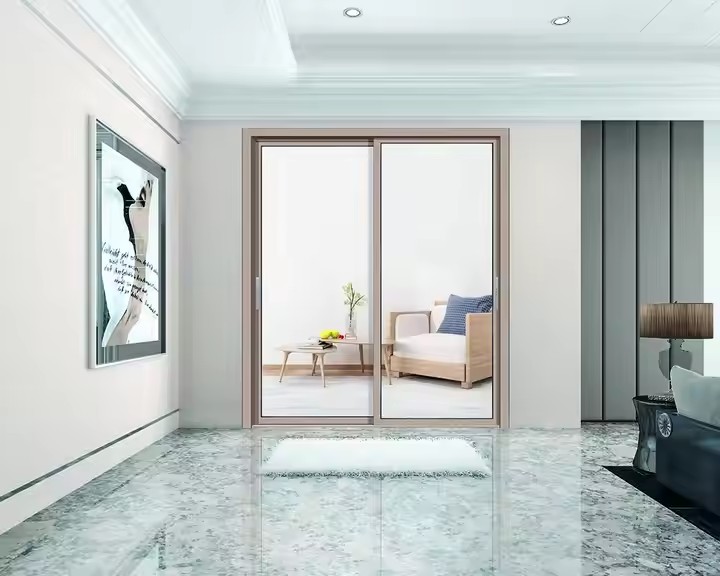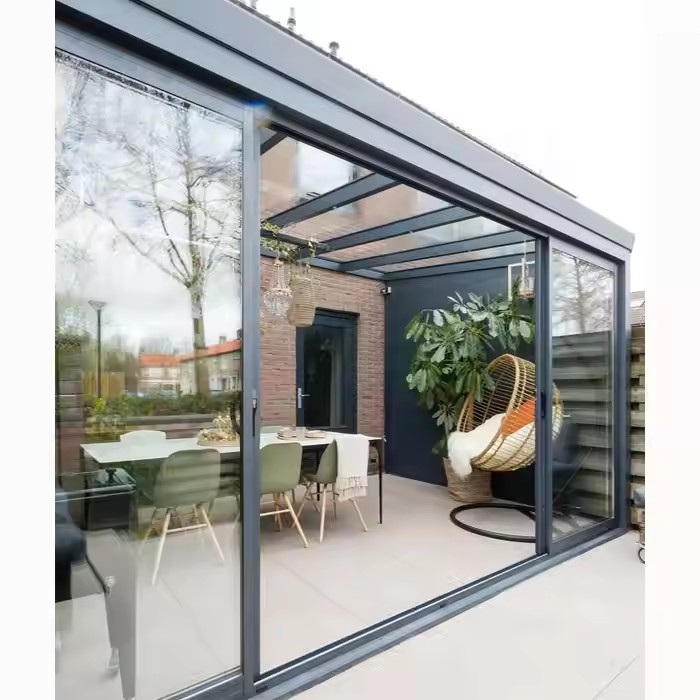- Climate Adaptability: A Protective Barrier Against Harsh Environments
Australia’s diverse climate imposes strict demands on doors and windows — from the hot, humid tropics in the north to the cold, windy temperate zones in the south, and the corrosive salt air along coastal areas. Folding doors must deliver all-around resistance to environmental challenges, making climate adaptability a top priority.
UV resistance and heat tolerance are fundamental requirements. Due to the thin ozone layer over the continent, Australia receives 20–30% stronger UV radiation than other regions at the same latitude. Prolonged sun exposure can cause door frames to fade, degrade, and transmit heat indoors, leading to excessive indoor temperatures. High-quality folding doors generally adopt two technical solutions:
First, they use weather-resistant materials such as anodized aluminum (which forms an oxide layer to block UV), UV-stabilized PVC, or pressure-treated hardwoods like local eucalyptus or acacia.
Second, they are fitted with low-emissivity (Low-E) glass, which reflects UV and infrared rays through a special coating. This not only prevents furniture fading but also lowers air-conditioning energy use in summer. For example, folding doors from the well-known Australian brand Aussie Doorworks can block over 90% of UV rays and reduce heat transfer by 40% with thermal break designs, greatly improving indoor comfort.
Wind and water resistance address Australia’s frequent extreme weather conditions — strong winter winds in the southeast, tropical downpours in the north, and cyclones along the coast. Premium folding doors feature tight sealing and robust structural integrity. Typical designs include:
A multi-seal system, with EPDM rubber seals (resistant to temperature extremes and aging) between the door frame and panels;
Adjustable bottom brushes or water-blocking strips;
Interlocking panel edges to prevent rain seepage.
Coastal installations often receive extra salt-spray protection, such as:
Fluorocarbon coating on aluminum profiles (tested to withstand over 5,000 hours of salt spray),
316 stainless steel hardware (three times more corrosion-resistant than common 304 stainless steel).

Thermal regulation capability is an extended function of climate adaptability. Inland Australia experiences significant diurnal temperature variation (over 20°C difference between day and night), so folding doors must balance ventilation and insulation. Most models offer operable panels:
When closed, the sealing system keeps indoor temperatures stable (retaining heat in winter, blocking heat in summer);
During mild spring and autumn days, users can open selected panels for natural airflow without fully folding the door.
High-end models may incorporate louvered or smart glass panels to adjust light and heat transmission, further reducing dependence on air conditioning or heating.
- Spatial Expandability: A Seamless Bridge Between Indoors and Outdoors
Australians deeply integrate outdoor spaces into daily life — barbecues, pool parties, and garden relaxation are common. A folding door’s key value lies in removing the boundary between indoors and outdoors, enabling fluid spatial transitions that significantly enhance the quality of living.
Wide openings and full transparency are the core of spatial expansion. Many Australian homes feature patios, terraces, or pools, requiring folding doors to span wall widths over 6 meters (and up to 10 meters in luxury homes) while folding completely to the side, creating an unobstructed, pillar-free opening. This demands a strong yet lightweight frame:
Aluminum is the preferred material for its high strength-to-weight ratio (only 1/3 the density of steel).
Some doors use thermal break aluminum (with internal insulation strips that also increase structural rigidity), allowing single panels up to 1.2 meters wide and 3 meters tall. Even large multi-panel systems can operate without added support columns.
For example, a waterfront villa in Sydney installed a 12-meter folding door composed of 10 panels. When open, the living room seamlessly connects to the terrace, creating a 40 m² unified activity space. When closed, large tempered glass panels preserve the garden view.
Multi-scenario flexibility elevates the functional value of space. Folding doors are not restricted to a single folding direction; instead, they adapt to various layouts:
Single-direction folding suits long, narrow areas;
Bi-folding (center-open) fits symmetrical layouts;

Curved folding accommodates round or irregular walls.
This flexibility enables different use cases:
In a kitchen-to-patio connection, partially opened doors create a serving pass-through;
For bedroom-to-balcony use, narrow panels offer privacy and airflow;
In commercial spaces like cafes or showrooms, fully opened doors extend indoor space outdoors, enlarging the service area.
Some designs even allow for detachable panels — a popular feature in rural Australian homes — enabling full seasonal removal in summer for unobstructed open space.

